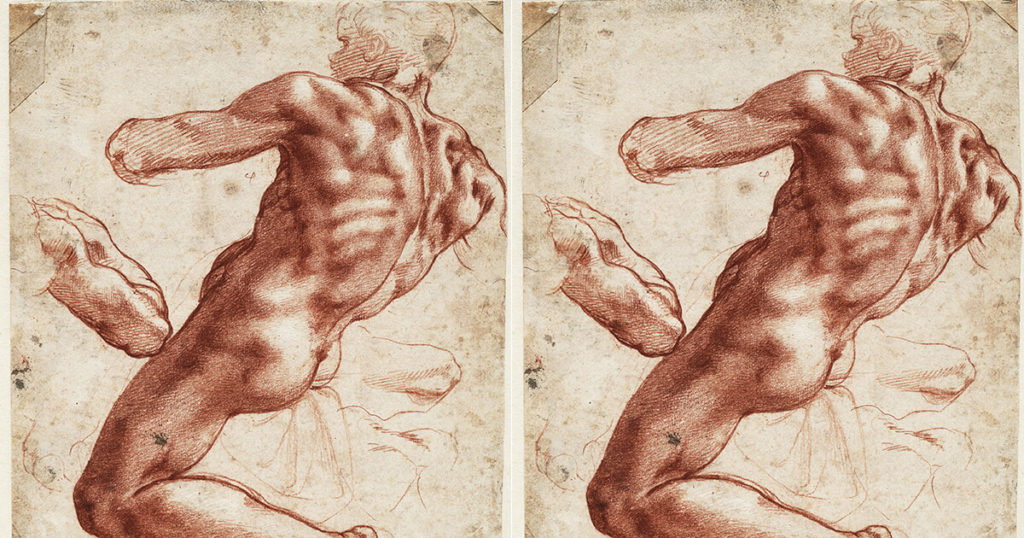
Long before he ever put a chisel to stone, Michelangelo was drawing, on whatever surface he could find, with whatever material he could get his hands on: bits of charcoal, red chalk, a quill dipped in ink. The act of drawing meant far more to him and to his contemporaries than simply recording what they saw: the Italian term disegno could also mean an outline, a design, or a Machiavellian plot. For Tuscan artists of the 15th and 16th centuries, disegno, in its full range of significance, stood at the heart of their activity no matter what their eventual medium would be. Throughout their lives, as they progressed from child apprentices to adult masters, drawing sharpened their minds as much as their eyes and their dexterity, and the same combination of mental, visual, and manual acuity—that is, disegno—also applied to arts such as weaving, tapestry, and lacemaking, all of which depend as crucially on a master strategy as they do on skilled fingers.
No wonder, then, that the Cleveland Museum of Art has called its new exhibition of Michelangelo drawings “Michelangelo: Mind of the Master.” Focused on a choice group of drawings from the Teylers Museum in Haarlem, the show also includes works from the J. Paul Getty Museum and the Cleveland Museum’s own collection, ranging from the earliest years of the artist’s activity to near the end of his very long life (born outside Florence in 1475, he died in Rome, still hard at work at the age of 89, in 1564).
Disegno may have ranked as a Tuscan artist’s most basic activity, but, until the 16th century, individual drawings were rarely prized for themselves: they only marked preliminary steps toward producing some other finished work—of painting, sculpture, architecture, embroidery, armor. The fresco for a wall, for example, would be worked out first in a series of smaller sketches before the final design was drawn to full scale on huge sheets of paper (the “cartoon,” from the Italian cartone, meaning “big paper”). Cartoons came in for especially rough handling: to transfer their designs to the plaster, artists might score them with a sharp instrument, or outline the main figures with a series of pinpricks (“pouncing”), and then blow charcoal dust through the holes. Paper was also expensive, so artists used sheets over and over again, sometimes for years on end. Sculptors plotted out the design for their work directly on the block of stone they intended to carve, and then chiseled it all away.
Login to view the full article
Need to register?
Already a subscriber through The American Scholar?
Are you a Phi Beta Kappa sustaining member?
Register here
Want to subscribe?
Print subscribers get access to our entire website Subscribe here
You can also just subscribe to our website for $9.99. Subscribe here
true



